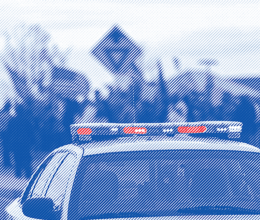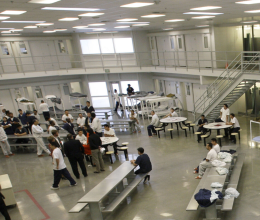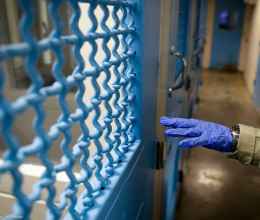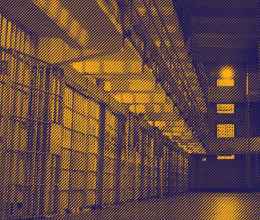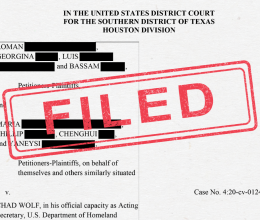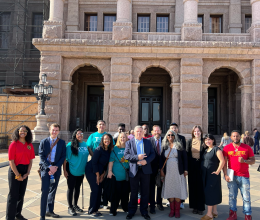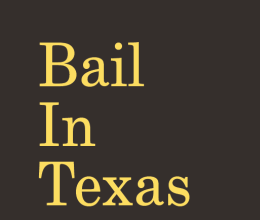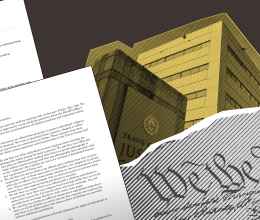
From the outset of the COVID-19 crisis, it was clear that the impact on people living and working in jails and prisons was potentially catastrophic. Advocates, including the ACLU, were sounding the alarm by early March in the United States. Five million people cycle through jails every year — where people live in close quarters and lack basic sanitary supplies — creating a petri dish for the transmission of COVID-19. Of course, prison walls can’t contain the virus — which can just as easily leave those facilities and spread into surrounding communities and beyond.
Swift action from every criminal system stakeholder — from police and public defenders to judges and corrections officials — was necessary to prevent a health crisis behind bars. The person with the most power to increase or decrease incarceration rates, the prosecutor, had the most opportunity to spur action by protecting people from unnecessary contact with the criminal legal system.
Once COVID-19 reached the United States, prosecutors should have swiftly used their immense discretion to reduce the number of people who are held pretrial or were sentenced to a confined facility, especially those most vulnerable. This includes outright dismissing low-level cases, recommending release without bail before trial, making full use of available diversion programs or alternatives that don’t involve confinement, offering non-confinement sentences in plea bargaining and sentencing recommendations, and supporting the release of particularly vulnerable people from jails and prisons.
Yet, despite early warnings, COVID-19 has raged throughout U.S. jails and prisons. Tens of thousands of people behind bars have tested positive for the virus, and hundreds have died — the result of sluggish and insufficient efforts from all criminal legal actors across the country.
As COVID-19 levels continue to spike around the country, prosecutors remain best poised to coordinate with all system stakeholders to slow the spread inside jails and prisons. In order to do so effectively, they must reflect on the policies they’ve incorporated so far, analyze their results, and identify new ways they can better protect people in jails and prisons to ensure contact with the system does not result in death.
This analysis series focuses on the 15 largest cities in the United States, and the policies local prosecutors implemented there to slow the spread of the virus into jails and prisons. This is the first post in the series. You can also jump to the second and the third.
1. New York, New York
New York City is home to five district attorneys — one in each borough. After hearing alarms from advocates as COVID-19 reached the city, many of the NYC prosecutors agreed to support decarceration to fight its spread in jails. In March, Manhattan’s Cy Vance and Brooklyn’s Eric Gonzalez signed onto a national joint statement urging local officials across the country to stop admitting people to jail when there was no serious risk to the physical safety of the community. The same month, Gonzalez took individual action to save lives, announcing his office would stop prosecuting low-level offenses that don’t jeopardize public safety. By May, three other borough prosecutors joined him and vowed to no longer prosecute social distancing arrests, though a recent article uncovered thousands of protest-related summons that they have not intervened to dismiss despite having the authority to do so.
While it remains unclear the extent to which these initiatives actually slowed jail intakes, the city reported that over 1,500 people were released from the city jails between the start of the pandemic and April 10. City prosecutors played a role, proactively reviewing the circumstances of each person in jail related to a case from their office and responding to both city and defender requests for review to determine whether to consent to release. Almost all of these offices regularly reported their consent numbers publicly — though the Staten Island DA’s office did not respond to repeated requests for their consent data, preferring to keep its COVID-19 policy actions behind closed doors.
Despite these efforts, many people who were vulnerable to the virus were left behind. On April 17, the Legal Aid Society filed a lawsuit against Vance’s office, calling for the release of 76 incarcerated New Yorkers that the office had been unwilling to consent to release previously. A few days earlier, Queens’ Melinda Katz drew criticism when Walter Ance — a man who had been serving time while awaiting his trial for over a year — died handcuffed to a bed after Katz’s office refused to consent to his release, despite his high risk of contracting the virus due to his ongoing health issues. In May, Staten Island’s McMahon penned an op-ed urging advocates to stop demanding drastic declines in jails, claiming that doing so would harm public safety.
Unfortunately, these jail declines did not stop COVID-19: As of April 13, Legal Aid reported that 7.8 percent of incarcerated New Yorkers tested positive for COVID-19 — a percentage almost six times higher than the city’s population.
2. Los Angeles, California
Los Angeles County District Attorney Jackie Lacey leads the largest local prosecutorial office in the nation. In mid-March, Lacey directed her office to consider individual health risks, delay filing new cases, consider recommending release for people awaiting trial for nonviolent crimes, and expand the use of pre-filing diversion.
By the end of March, LA County had already released over 1,700 people. But Lacey’s policies may only tell part of the story — local sheriffs and public defenders also actively identified and released people from jail in reaction to the pandemic. In April, California’s Judicial Council set bail at zero statewide, temporarily ending wealth-based, pretrial incarceration for most misdemeanor and lower-level felonies in an attempt to limit the further spread of the virus.
Lacey’s office directives leave wiggle room for significant, life-endangering exceptions. For example, despite the office’s directive to avoid pretrial detention during this pandemic, LA County prosecutors have carved out an exception to pursue bail for people accused of looting. Moreover, in an April email obtained by HuffPost, a deputy district attorney noted that the office would consider an overly broad definition of “looting” so that it includes thefts involving property valued at $950 or more — a value that an iPhone 11 Pro alone surpasses. George Gascón, who is running to replace Lacey, accused her office of continuing to pursue low-level cases despite the pandemic, including panhandling, drinking in public, driving with a suspended license, drug possession, and loitering. Rather than addressing these critiques head-on, Lacey declined an invitation to a town hall hosted by justice organizations, including the ACLU of Southern California, on May 12 to discuss LA district attorney policies during COVID-19 with the public.
3. Chicago, Illinois
Early on in the outbreak, the State’s Attorney for Cook County, Illinois Kim Foxx committed to working with local sheriffs and public defenders to identify paths toward decarceration to slow the spread of the coronavirus. For her contribution, on March 20, her office announced it would not be prosecuting new low-level drug offenses during the pandemic. Her office was also reviewing thousands of cases to identify people to recommend release from jail when they would not pose a threat to public safety in emergency bail hearings. She later crafted a policy not to prosecute individuals charged with minor offenses related to peaceful protests, a move that kept people out of harm’s way in jails.
Unfortunately, these changes did not always reach the courtroom. The public defender’s office has publicly called out that local prosecutors have not agreed to a majority of motions to reduce bond or release defendants from the Cook County Jail during the outbreak. Foxx has been clear that her office will not support mass release, but is working hard to find people who are ideal for immediate release, and hopeful that this effort will clear the path to broader and long overdue bail reform in the future.
4. Houston, Texas
In the early days of COVID-19, defenders criticized Harris County, Texas District Attorney Kim Ogg’s slow response to the pandemic, including her delayed remote working office policy. While local officials across the state began to release people awaiting trial to slow the spread of the virus, Ogg overtly fought judicial efforts by filing an emergency motion to block judges from considering “public health matters” when deciding bail. In April, a lawyer representing misdemeanor judges in a cash bail suit sent a letter to DA Ogg, accusing her of also misrepresenting Gov. Abbot’s executive order on limitations of release during the pandemic to deny the release of people on low-level offenses.
Ogg’s efforts to prevent decarceration have led to drastic consequences. The state’s system is now at a crisis point as a backlog of people crammed in local Texas jails builds up — both those held pretrial and those waiting to transfer to prison are trapped together despite the pandemic’s threat.
5. Phoenix, Arizona
Maricopa County, Arizona, the fourth most populous county in the nation and home to Phoenix, has successfully cut down the number of people going to jail while awaiting trial to slow the spread of the coronavirus. Many of these reduced filings have been credited to the Maricopa County sheriff and the Phoenix police chief, who have developed policies to issue summons and citations for many offenses on the front end of the system. While Maricopa County Attorney Allister Adel agreed to pause the filings of some cases, she made clear that these cases would not be dismissed at any point, leading advocates to fear a flood of backlogged cases could inundate the system in the near future. Further, vowing to prosecute low-level cases related directly to the pandemic’s impact on the economy, such as theft or trespassing, does more harm than good for the community.
Adel certainly understood some need to alleviate the number of people behind bars during the pandemic. She directed her office to consider this broader public health needs when making charging decisions and to respond appropriately to defense attorneys’ requests for release. But advocates, including the ACLU of Arizona, asked her early on to implement a variety of more specific proposals, which Adel declined to even meet to discuss. Instead, she authored an op-ed vilifying advocates’ intentions and arguing that people in prison should not be released — a sign that she does not grasp how this virus can turn jail stints into death sentences.
